EXPLAINER: WP’S ‘2024-MODEL’ FORK & SHOCK
We speak to the man in charge of development for WP’s suspension components, Sebastian Wolfgruber, to get the good oil on WP’s all-new XACT Closed-Cartridge fork (which appears on the 2024 enduro models from KTM and Husqvarna), and the “full new range of WP Pro Components” in the pipeline!
TM: Sebastian, you started out as a designer for WP’s off-road suspension department some seven years ago, and you’re now the Project Manager for WP’s off-road R&D program, right?
SW: Yes. For the past four years, I’ve managed the off-road R&D program for WP’s Pro Components – our aftermarket components – and the development of the suspension components used in the KTM group’s off-road production models. That’s what brought me to Lesotho for the international media launch for KTM’s 2024 enduro models.
Whether we’re talking about KTM’s or Husqvarna’s 2024 enduro models, 95% of their components are new. And yet, a greater majority of the market’s attention has been focused on just one component: these bikes’ all-new WP XACT Closed-Cartridge fork. Why do you think that is?
Because the first-time fitment of a fork that uses a closed-cartridge system is big news for both brands’ enduro models. Also, the demand for a closed-cartridge fork on these models has been very high, so consumers are happy about this upgrade. We knew the demand was high because we sold a lot of our WP 6500 Cartridge Kits in the past couple of years.
WP’s XPLOR Pro 6500 Cartridge-Kit fork has been available for a couple of years now and sells for about $2000 in Australia (and, by the way, has been widely praised). But in terms of design, how similar is WP’s all-new ‘production’ XACT CC fork and the 6500 Cartridge-Kit fork?
Aside from a few differences in the internals (such as a change in diameter of their base valve – 34mm on the CC versus the 30mm on the 6500 kit) and a few different materials, the two are actually very similar. The CC fork also shares some parts with the XACT air fork that’s used on the motocross models for both KTM and Husqvarna because that also uses a 34mm diameter base valve.
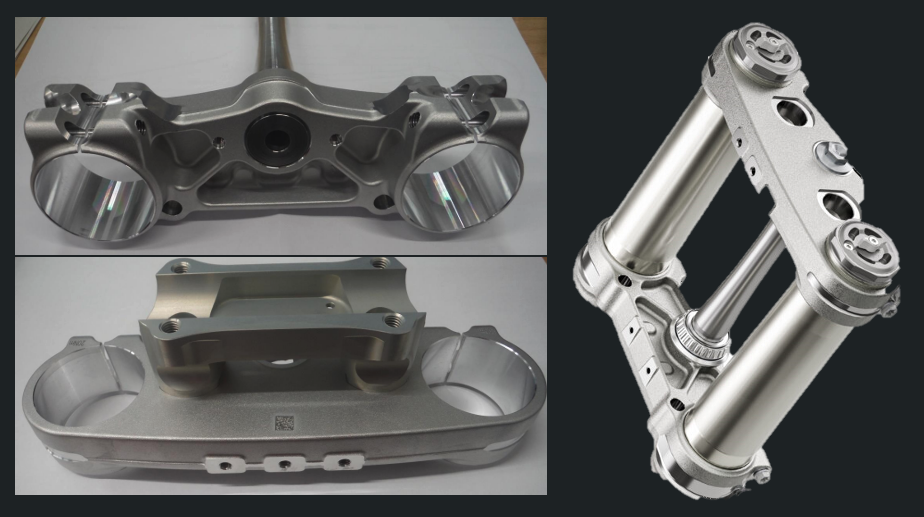
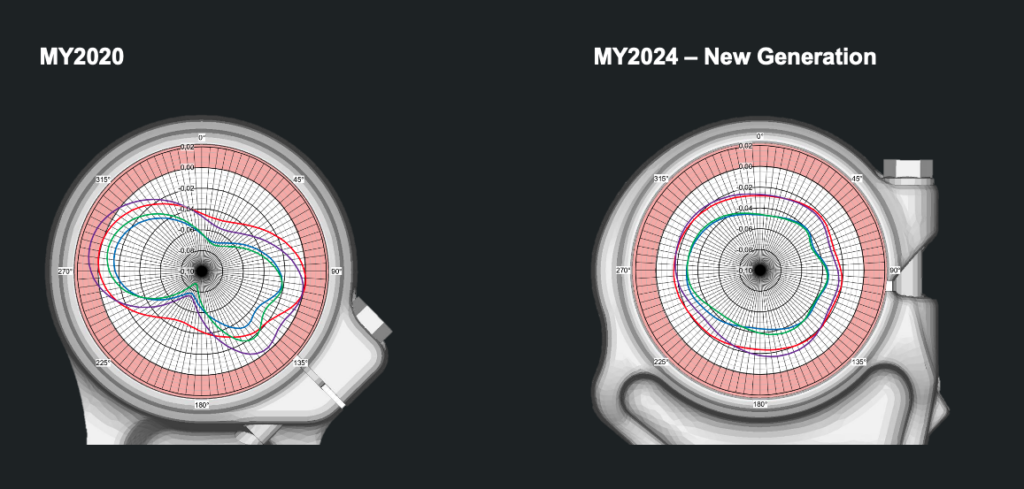
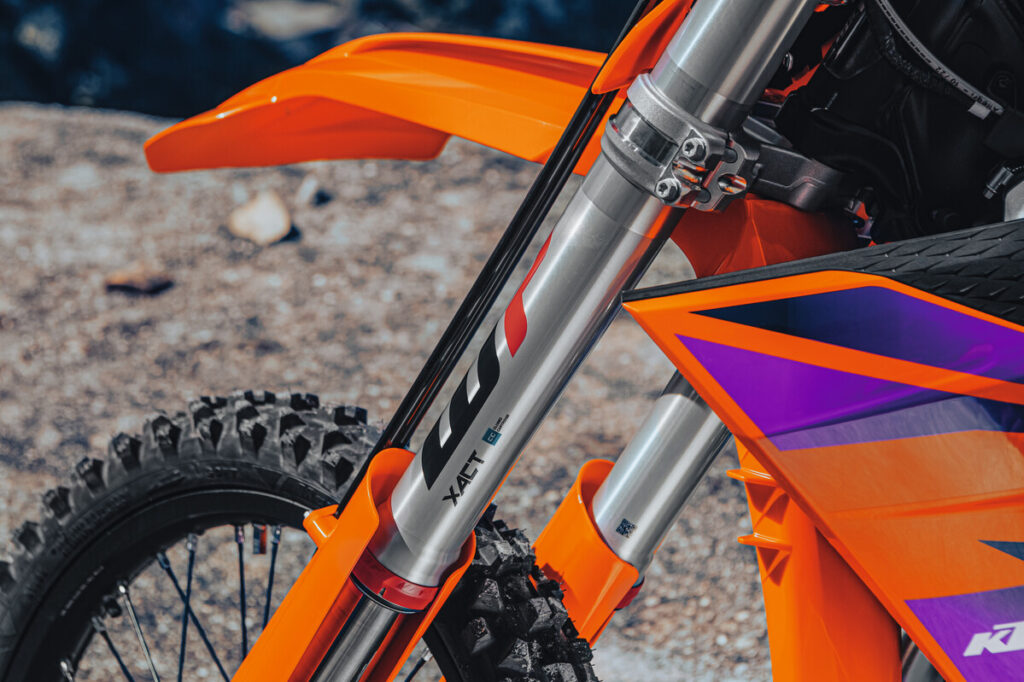
The 2024 KTM models’ all-new high-grade forged triple clamps create a much more even clamping surface on the outer stanchions of WP’s 48mm XACT CC fork to ensure a smoother fork action. Pinch-bolt torque settings for the lower and upper triple clamp are upped to 15 and 20Nm, respectively.
Also, the ‘production’ CC fork does not come standard with external spring preload adjustment, but the 6500 Cartridge-Kit fork does. Correct?
Yes, that’s right. But it is easy to add external preload adjustment to the CC fork by fitting a WP Pro Components part. This actually adds preload to the base valve’s pressure spring, rather than to the main fork springs themselves (remember that, on both the XPLOR open-cartridge fork and the 6500 Cartridge-Kit fork, the external preload adjuster adds tension to the main fork springs). Preloading the pressure spring – which sits on top of the base valve in the cartridge – is something we came up with during the development phase with this CC fork and it offers a big improvement. Basically, adding preload in this way allows the rider to still adjust the front-to-rear balance of the bike, but without affecting the comfort of the ride over small bumps – that ‘plushness’ in that first part of the stroke.
What are the major improvements the CC fork offers, and why?
The major thing with the closed-cartridge system is the fact the oil is pressurized within the cartridge. This stops the oil from foaming, which is what will cause a loss of damping. So not only does the CC fork give you improved performance; it also ensures the performance remains consistently high, even after the bike is ridden hard for a long time. The other benefit is that, when you change between the compression and rebound stroke, the damping reacts very quickly with the closed-cartridge system. Also, the new hydro-stop system in the fork gives it much more control and bottoming resistance at the end of the stroke.
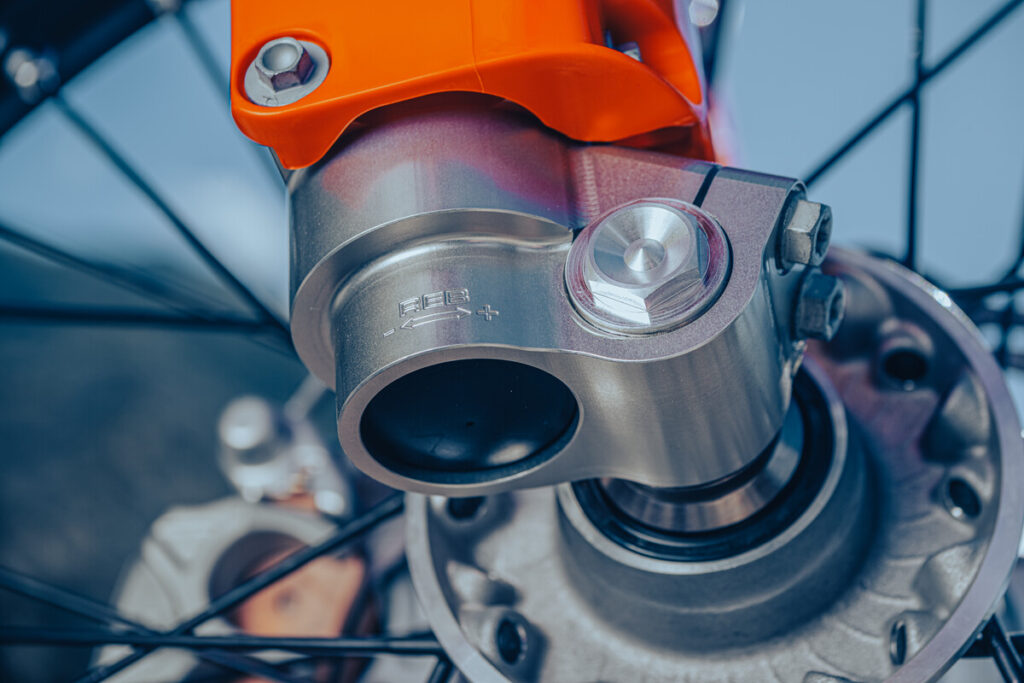
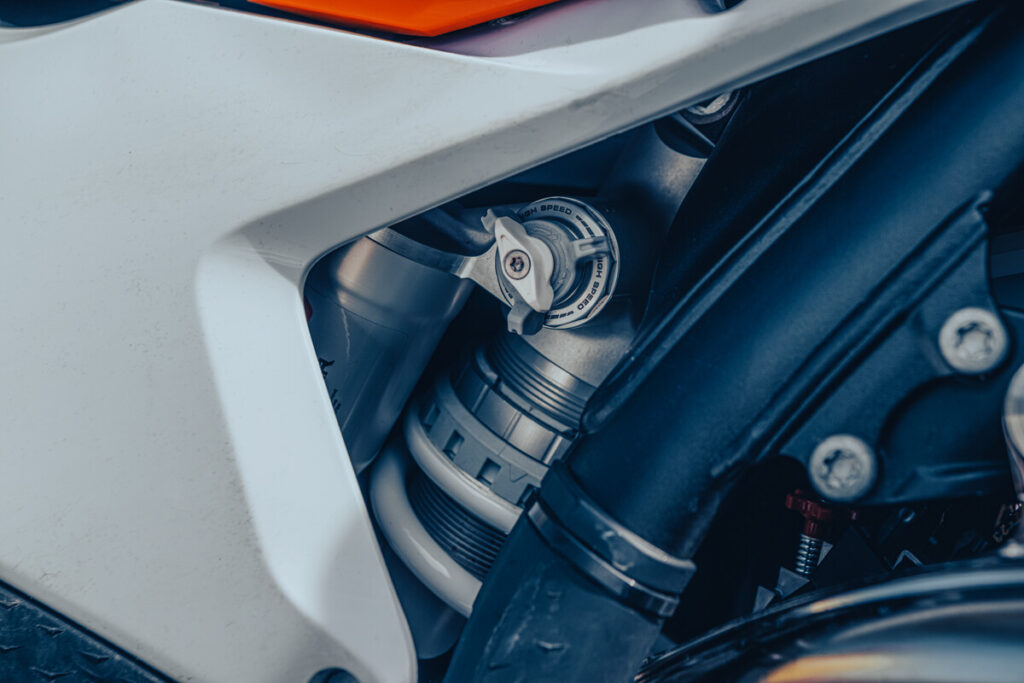
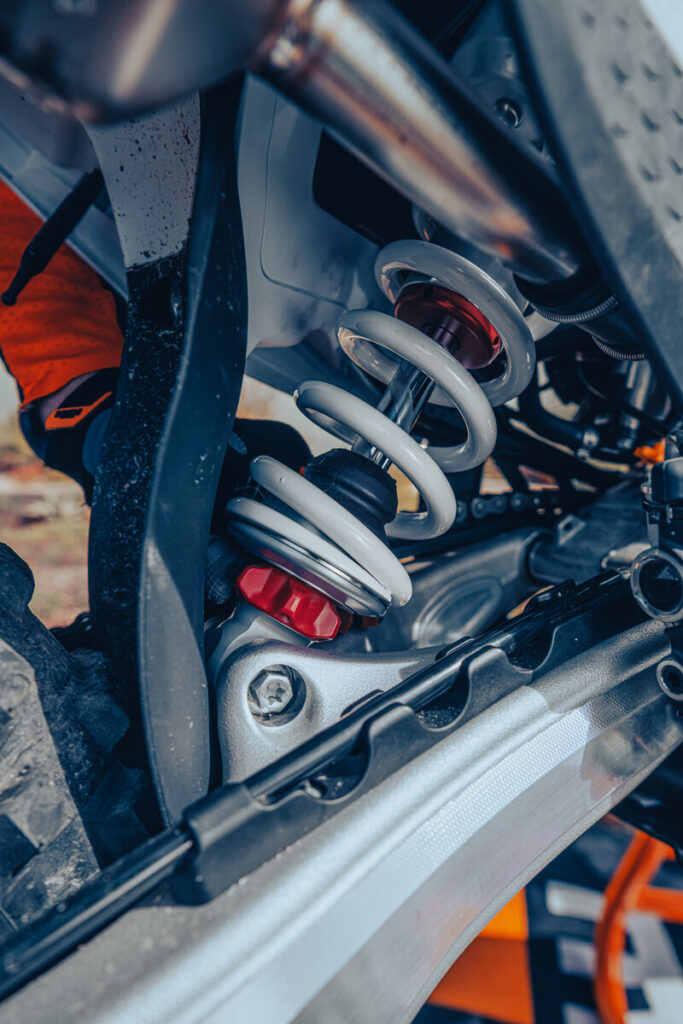
Why has it taken KTM and Husky so long to move to a CC fork when, as you say, the demand for the upgrade has been so high?
Well, we still believe in the open-cartridge system. And in fact, during the development of the new XACT Closed-Cartridge fork, we also tested several versions of the XPLOR open-cartridge fork and were able find performance improvements with it too. Which is great, because both brands still use WP’s XPLOR fork on several of their other models. But this new XACT CC fork offers a greater step up in performance again. And, as I’m sure the product managers at KTM and Husqvarna will have explained to you, this new CC fork was specifically introduced simultaneously with the all-new frame design concept so the two would work in harmony with each other.
Now that the XACT CC fork is fitted to KTM’s and Husky’s enduro and cross-country ranges, only the motocross models continue to run the air-sprung fork. So, even from an economies of scale perspective, does that mean the MX bikes might also move to a version of WP’s coil-sprung CC fork in the future?
We can now produce the closed-cartridge spring fork efficiently in large numbers, so it would be possible for us to develop it for motocross. But that would depend entirely on what those brands’ product managers request from WP.
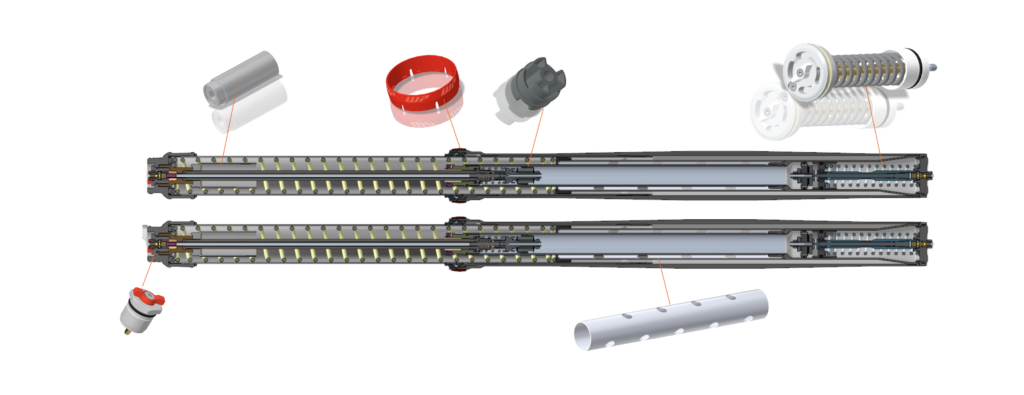
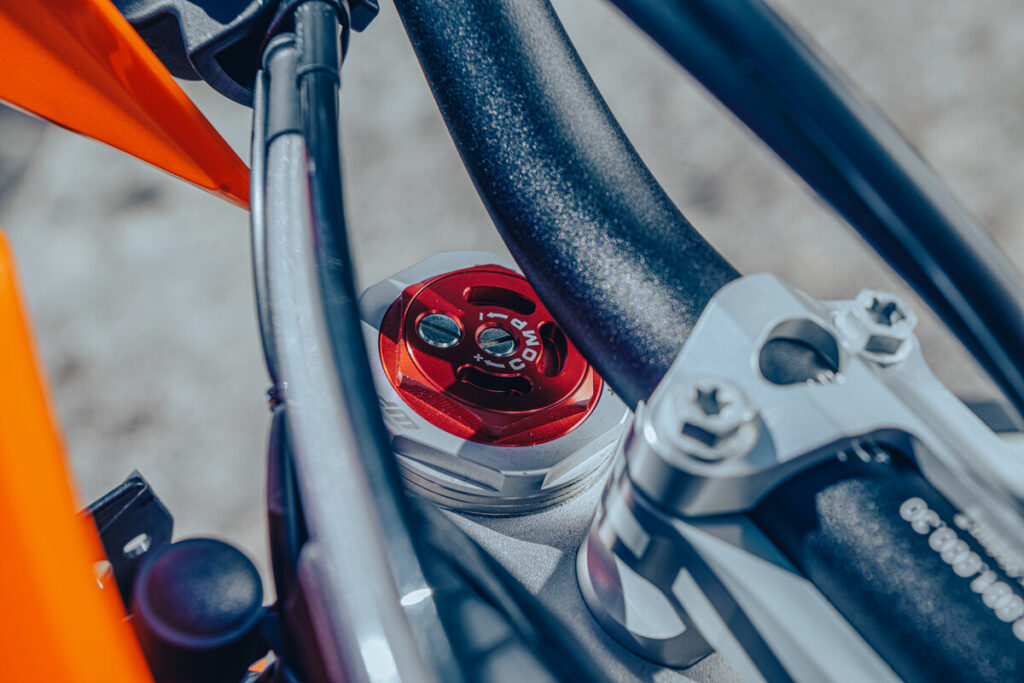
External preload adjustment can be added to the CC fork via a WP Pro Components part. This adds preload to the base valve’s pressure spring, rather than to the main fork springs themselves – the benefit of which is that it allows the rider to adjust the chassis’ front-to-rear balance, without affecting plushness over small bumps.
Aside from WP developing forks and shock absorbers for the KTM group’s brands, WP Pro Components is also an important part of the business. And I can imagine that this new XACT CC fork is going to cannibalise the sales of WP’s XPLOR Pro 6500 Cartridge-Kit fork bigtime.
For sure, it will. But there is something else to come from WP Pro Components. Stay tuned.
Okay … can you say any more about this? Are we talking about a new aftermarket fork that’ll sit somewhere between WP’s $2000 6500 Cartridge-Kit fork and the $5000 XPLOR/XACT Pro (cone-valve) forks?
Perhaps. Let’s just say that, before too long, you will see a full new range of WP Pro Components.
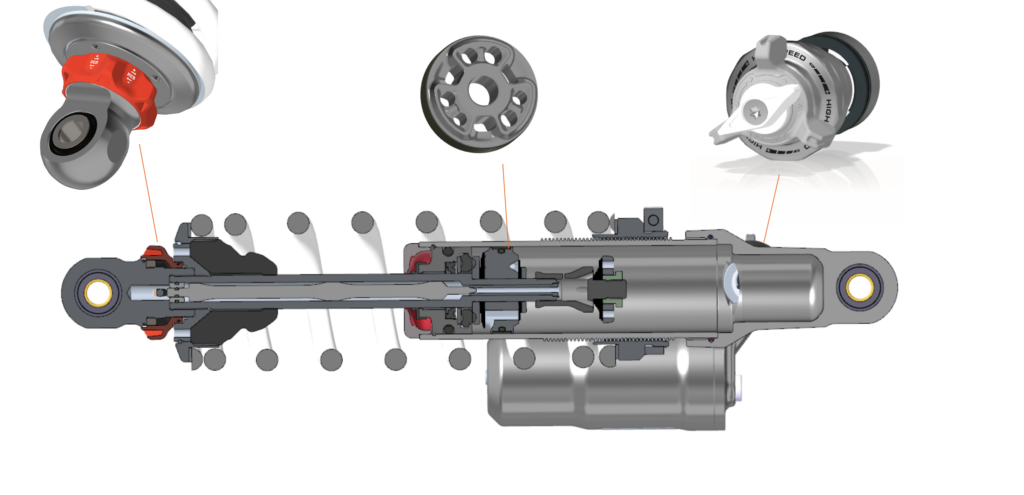
KTM’s all-new XPLOR PDS shock is 20mm shorter (and 380g lighter), but it retains the same 103mm of shaft stroke. There’s also a new hydro-stop system to improve bottoming resistance, a CFD-optimised asymmetrical main piston, and hand-adjustable clickers all-round.
With all the focus on the new CC fork, many seem to have overlooked that the 2024 KTM enduro models also get a completely new PDS shock!
Agreed. And that shouldn’t be overlooked because the shock also offers a big step up in performance. For their 2024 enduro models, KTM’s chassis development team requested that we produce a shock that was shorter between its two mounting points, but retained the same stroke; the same rear wheel travel. That was quite a challenge, but we made it happen. At 403mm, the new shock is about 20mm shorter, but the shaft’s stroke is still the same 103mm. And this new PDS shock uses a similar system to the fork to prevent bottoming out. What’s also completely new on the shock is the CFD-optimised main piston, which offers a very plush initial ride and then has more control through the stroke.
The shock piston’s new asymmetrical ports allow this, right?
Exactly. This design directs the oil in a way that opens only one side of the shims initially, before the entire surface area of the shims progressively come into play. This is something we discovered during our CFD [Computational Fluid Dynamics – Ed] simulations, and the benefits were confirmed by test riders in the field. We believe this offers a significant performance gain.
What feedback did you get after the media launch for the 2024 KTMs?
The media’s feedback was very positive; saying the entire suspension package was noticeably firmer, but also worked much better than it previously did. We are very happy about that because it confirmed our belief that we’d made a big step forward. Both the fork and shock have made improvements in the comfort of their ride on small bumps, and yet the damping control at the end of the stroke is also much better. And that control throughout the stroke is what gives the bike stability and safety and predictable handling. I was also very pleased to hear that test riders were dialling the fork’s compression clickers in both directions – not just adding more compression, which has been what’s happened in the past with the open-cartridge fork. This is encouraging because it tells me that the suspension settings we’ve used for these 2024 models is much, much closer to what riders want and it offers a wider range of adjustment.
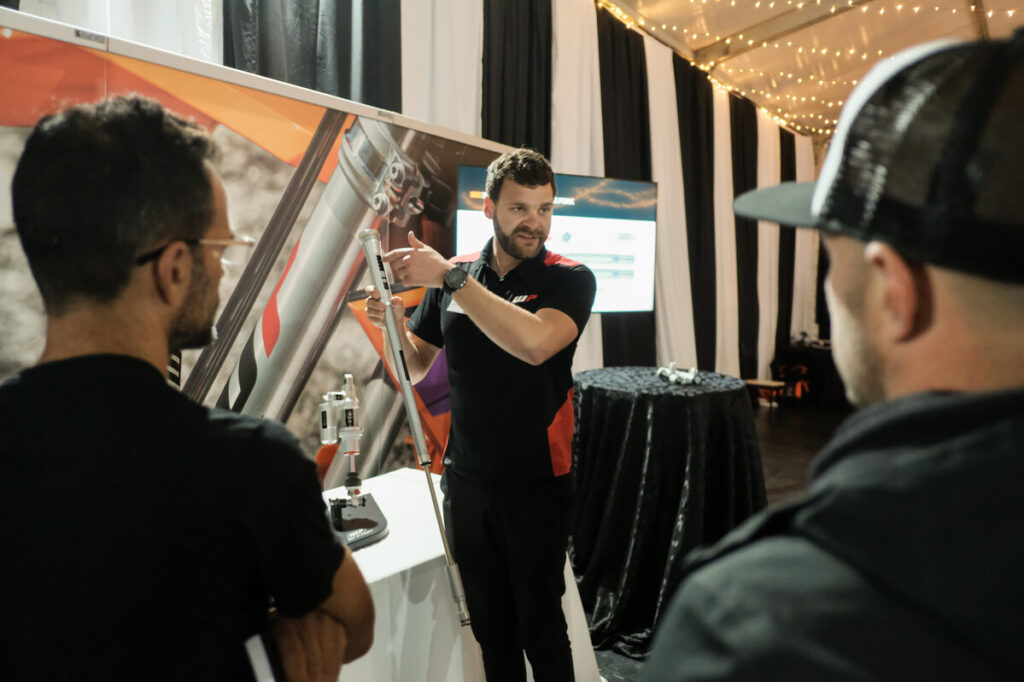
The new shock’s design improves serviceability too, right?
It does. Unlike in the past, the eyelet’s bearing and seals on both the upper and lower shock mounts are now the same. That’s a bonus for servicing and ordering parts. Plus it’s much more convenient that clickers on both fork and shock are now all hand-adjustable.
With the new anti-squat chassis pushing the rear wheel harder into the ground during acceleration, what are the implications for the new XPLOR PDS shock’s spring and damping settings?
The move to the anti-squat chassis meant we no longer had to use overly firm settings to hold the shock up in its compression stroke; because the frame geometry did much of this for us. In other words, we no longer had to compromise comfort in the rear-end, so this new chassis actually made the shock set-up easier for us.
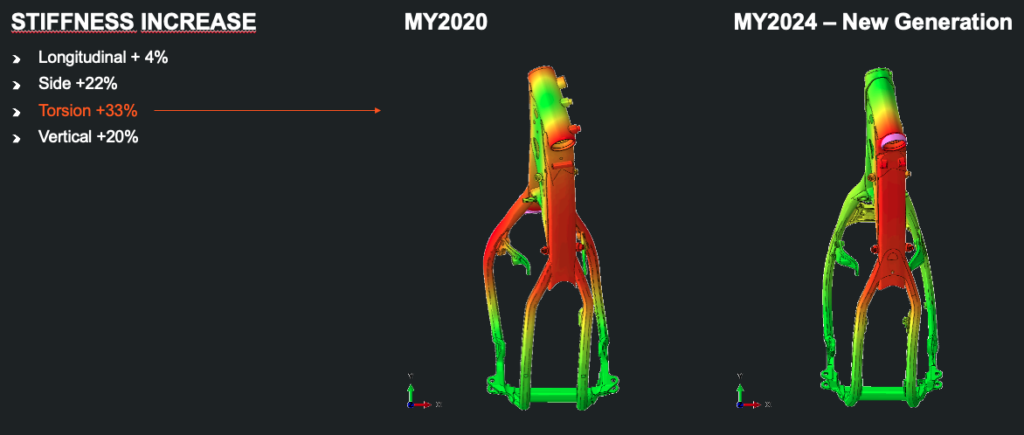
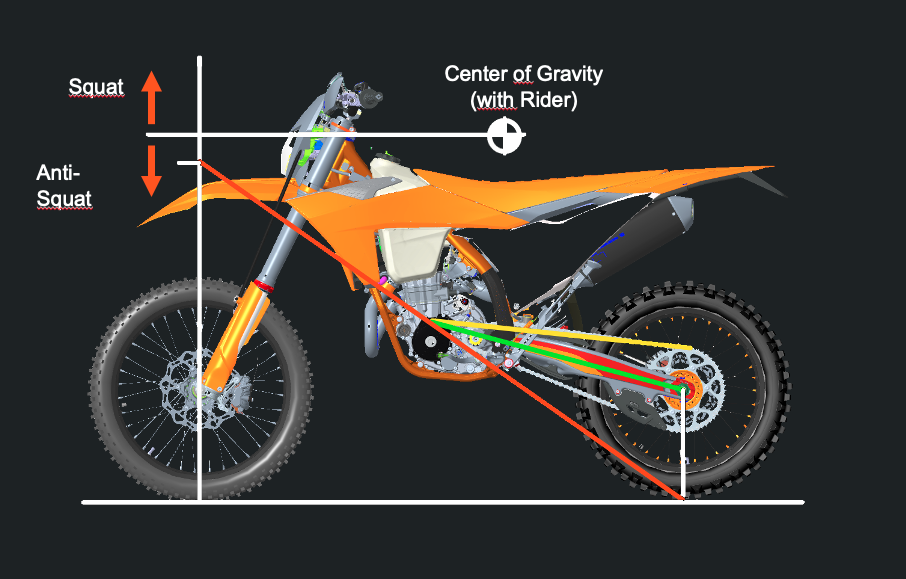
Compared with KTM’s 2023 EXC/EXC-F models, the 2024 enduro frame is between 20 and 30% more rigid, depending on which axis you’re talking about. WP’s new 48mm XACT CC fork was specifically introduced simultaneously with the all-new stiff frame design concept so the two would work in harmony with each other.
With the new stiff frame concept used on both KTM’s and Husky’s 2024 enduro bikes, you could argue that the suspension settings are now more critical to ensure a compliant ride in off-road terrain.
Yes, a more rigid frame does mean there’s a greater emphasis on the suspension to create that ‘off-road compliance’ people often talk about. But remember that the fork and shock settings are just one of several ways that a more forgiving and compliant character has been built into these 2024 models. It’s also done via changes to certain forged sections of the frame, along with altering the flex characteristics of things like the triple clamps and engine mounts. The important thing is that all those design elements work together to complement each other, and I think that’s what is most impressive about these new bikes.
I understand that both KTM and Husqvarna have moved to specific fork and shock settings for various 2024 enduro models. Can you tell us what each capacity now gets?
Yes, they now use different springs and damping settings because each of the different capacities has a different weight, different front-to-rear weight bias, different engine braking characteristics, different rotating masses, etcetera. For both brands’ forks in 2024, the 150cc two-strokes use 4.0N/mm springs; the 250/300cc two-strokes and 250cc four-strokes use 4.4N/mm springs. And the 350/450/500cc four-strokes all use 4.6N/mm fork springs. The spring rates and damping for the shock absorbers are also different for the 2024 models, and the spring rates will obviously differ between KTM’s no-linkage PDS and Husqvarna’s rising-rate linkage. For KTM’s PDF shock, a 63N/mm spring is used on the 150EXC; a 69N/mm spring is used on the 250/300EXC and 250EXC-F; and a 72N/mm spring is used on the 350/450/500EXC-F. For Husqvarna, a 39N/mm shock spring is used on the TE150; and a 45N/mm shock spring is used on the TE250/300 and FE250/350/450/501.
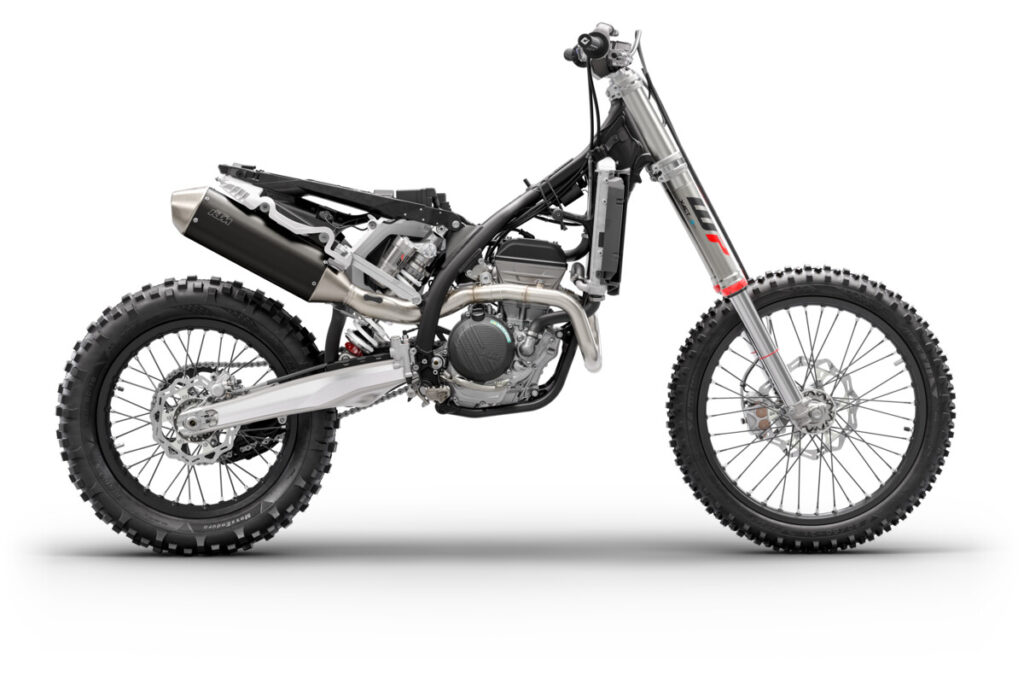

Thanks for your time, Sebastian. And for that tantalising insight into what’s in the pipeline for WP Pro Components!
No problem, Andy. It’s actually been great to come along to this KTM launch and speak directly with independent test riders from the media because these 2024 bikes come with a very different WP suspension package. And it’s been very gratifying for me that the feedback has been so positive.
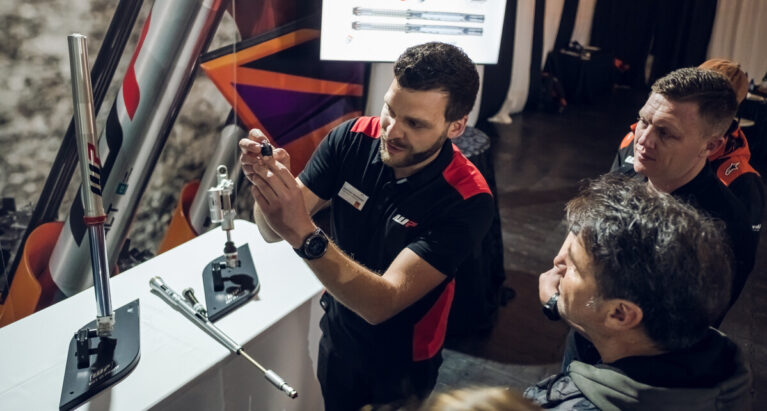
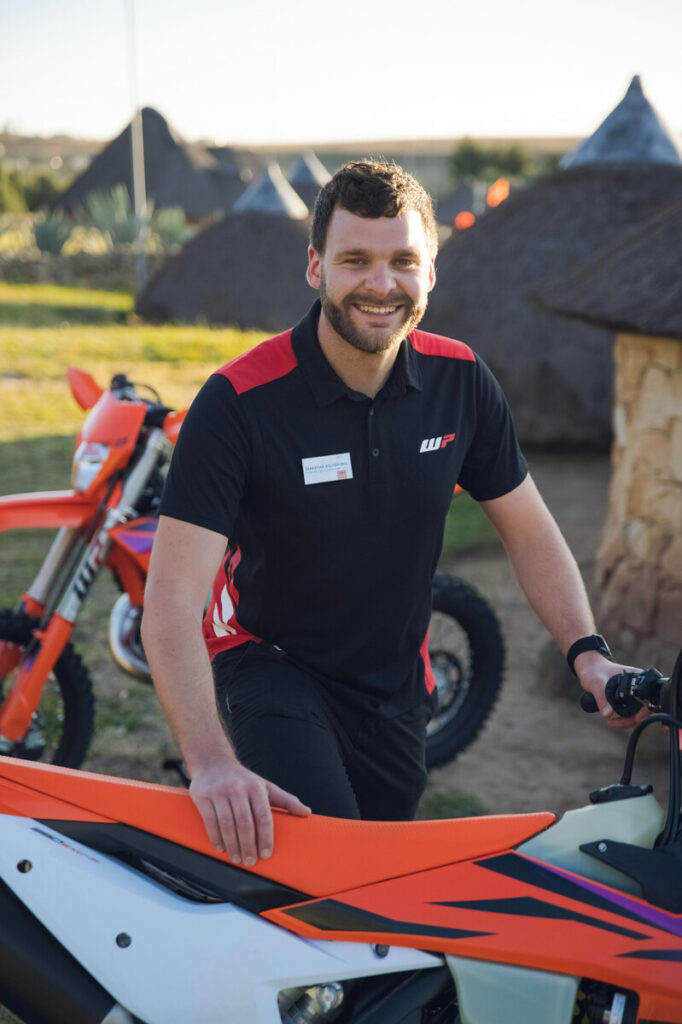

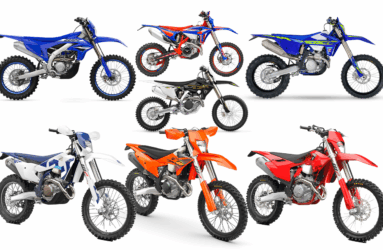


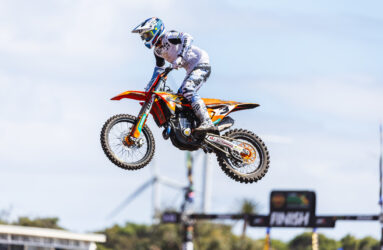


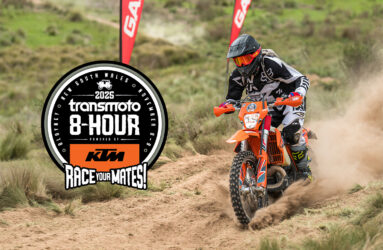
Be the first to comment...